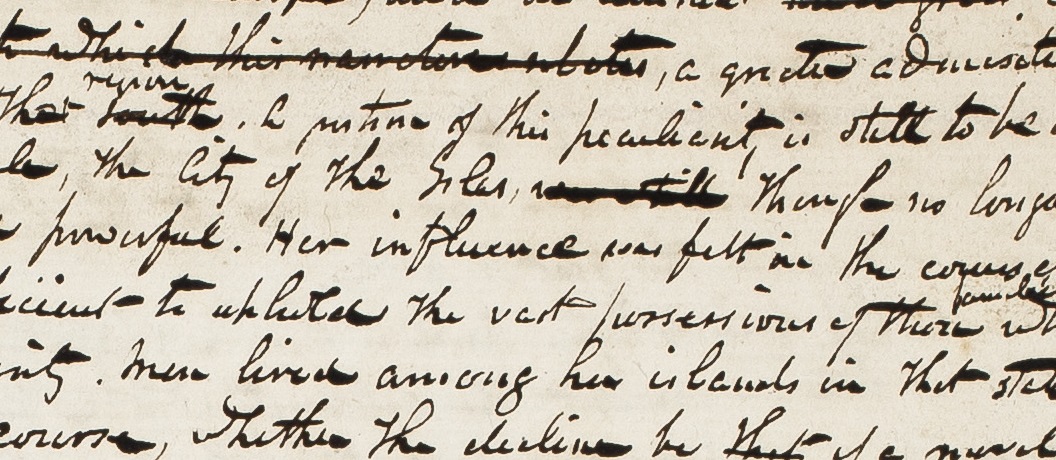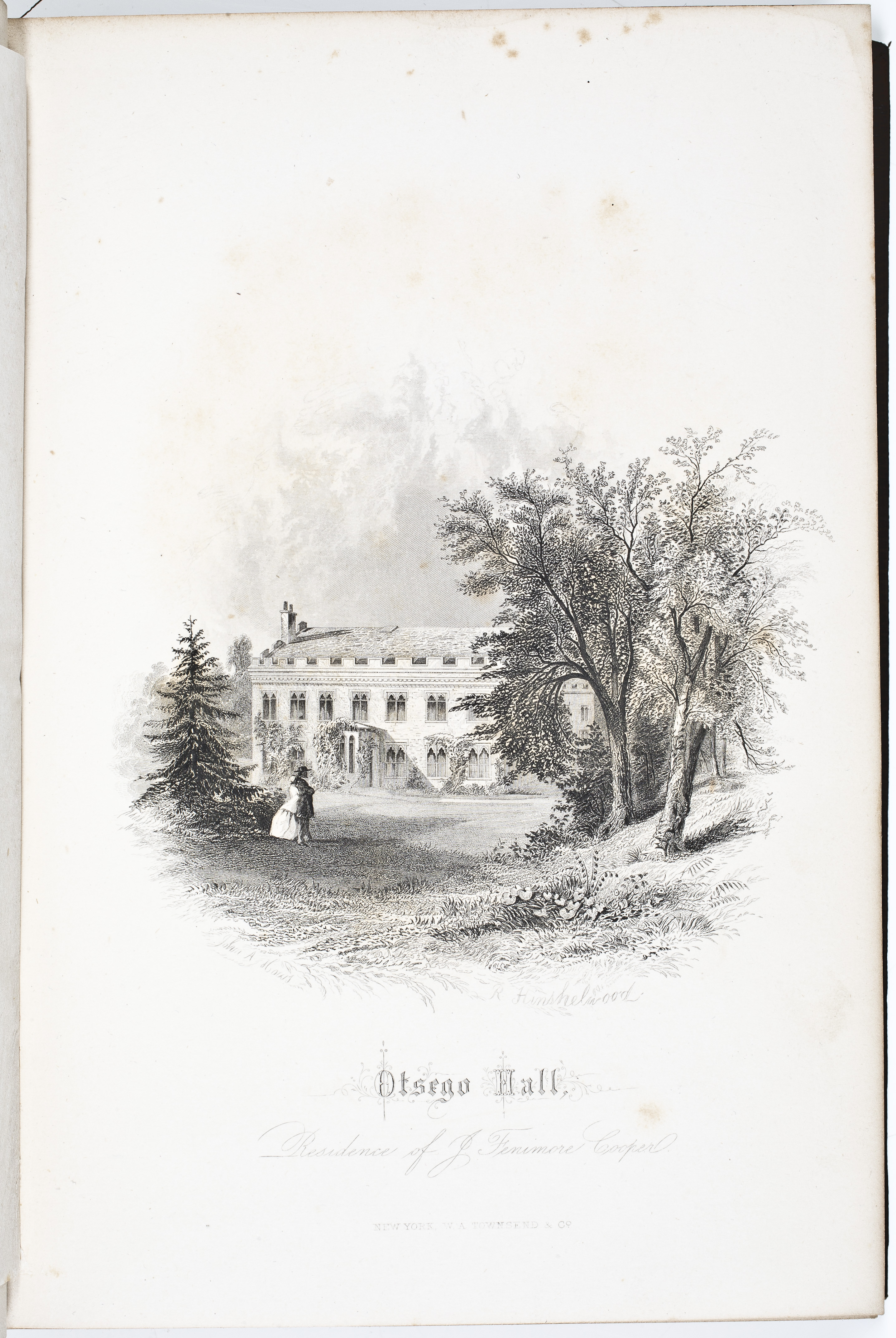
It seems as though many studies of James Fenimore Cooper begin on the defense. Mark Twain’s severe treatment of Cooper in the 120-year-old essay “Fenimore Cooper’s Literary Offenses” leaves many a poor Cooper critic to battle with Twain before easing into the comforts of Cooper. Never mind that Melville called him “our national novelist” or that Balzac declared Cooper’s writing “the despair of every novelist who has tried to follow in [his] footsteps.” Some people will insist that Cooper’s novels are insignificant, boring, tired. Echoing Truman Capote’s description of Jack Kerouac’s work (“It isn’t writing at all—it’s typing”), one might say of Cooper, “It isn’t writing at all—it’s scribbling.”

The newest AAS online exhibition, James Fenimore Cooper: Shadow and Substance, does not work very hard to defend Cooper. Instead it presents a variety of AAS materials that showcase the variety and significance of Cooper’s work. There are three sections of the website: one on the Society’s manuscript holdings, one on F.O.C. Darley’s and Alfred and Tony Johannot’s illustrations of Cooper’s novels, and one on the Cooper Edition. For those unfamiliar, the Cooper Edition, officially known as The Writings of James Fenimore Cooper, is the series of scholarly editions that has been in production for over forty years and has received the support of the Society for nearly as long. Librarians at the Society have built the Cooper collection of works published in any language up to the year 1877 to aid in the production of the series.

Interested readers will find new comments and reflections by those who have worked on the Cooper Edition, a gallery of Darley’s illustrations, brief descriptions of Cooper’s editorial practice, and the author’s comments on his own work and publishers.
Thanks to the help of Ken Albers and Omeka, this web exhibition is here for you to enjoy!
